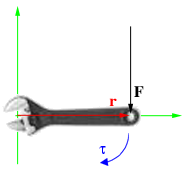No accommodation in the whole of the Shetland Islands can boast a location quite as spectacular as Sumburgh Lighthouse. Perched on a precipitous headland at the most southerly tip of the islands, the lighthouse dominates the landscape and seascape for miles around.
The building dates from 1821, the first lighthouse to be built in Shetland, and was constructed by Robert Stevenson, grandfather of the famous author Robert Louis Stevenson. It sits on the site of an ancient promontory fort and is within a few miles of the major archaeological sites at Old Scatness and Jarlshof.
The lighthouse is situated above the imposing cliffs of Sumburgh Head, an RSPB reserve which is home to over 10,000 seabirds in the summer months, including Puffins, Guillemots, Razorbills, Kittiwakes and Shags. It is also ideally suited for receiving migrant birds during the spring and autumn migration periods and is building up quite a reputation as a whale-watching site.
The building represents ideal family accommodation with one double, one twin, one bunk bedded and one single bedroom, a lounge, a bathroom, a toilet and a fully equipped kitchen including a washing machine. The property is centrally heated and car parking is available.
It is approximately 2km from the main airport and roughly the same distance to the nearest bar/restaurant at the Sumburgh Hotel. The nearest shop is 4km away at the village of Toab and there is an indoor swimming pool at Sandwick some 19km away. The main town of Lerwick is about 40km away, around 30mins drive.
Shetland's first lighthouse, on Sumburgh Head, is a listed building. Built by Robert Stevenson, who accompanied Sir Walter Scott to Shetland in 1814 - a cruise that produced his novel The Pirate, set around Jarlshof and Fitful Head. Thursday 31 July 1823:
Preached in the Meeting House at one from Isaiah 12.3. Went to Sumbra heat [rectius Head] light house. Published for preaching as I went. The ground here is sandy, has some very good bear, the oats no a miss; this is the best corn I have seen in Shetland, and there is more of it. The popelation of these two Parishes is 3700. The towns are thick, but in general not better constructed than else where. Here are a few rabbits in the sand, but S. wind has blown many acers on the ground, which has destroyed many towns. In one bank I saw the other day some primroses but small and weakly, now in full bloom.
Saturday 2 August 1823:
This morning was wet. By ten it became very fine. The prospect is delightful: had a fine view of Fair Island, and up as far as Noss, and W. to Folla. Many boats in the Roost of Sumbro, fishing. The light room is truly butifully in a fine day, as every thing is kept so exceedingly clean and bright that the eye get dazed by the refflection. This is a lovely situation of a fine summers day, but in winter it is dreadful. Such is the violence of the storm, that the wind blows the stones from the clift beneath in showers, that it has dashed these windows to shives, blew in their shitters, the iron bars by which they were fastned bent a willow hope. Altho they are from 4 to 5 hundred feet above the level of the sea, they are compleately drenshed with salt water, and are fequently in distres for fresh water to drink. Having non on the head, it was dangerous to go and fetch any from below - - -
The most rain that fell here was on the 8 of May which was 72 parts in their gauge.
The warmest day this summer was in June when the thermometer was 57; the coldest, February 4, thermometer 26.
The highest state of the berometer was in May, when it was 30-26, lowest March, 28-2. Le[f]t the lighthouse where I slept two nights. Went to Mr Gearsons, where I dined, took tea, spoak to many of the cottagers about their soul. All seemed thankfull for advice. The people appear ripe for the Gosple. The bear in this part is very promising, but they say it is much later than last year. Quendle, the estate of Mr G. exceeds any thing I have seen in Shetland. I learn that it is the best in all the country. In walking along the beech I picked up some of the largest cockl shells I ever saw.
































































































.jpg)


















































































































